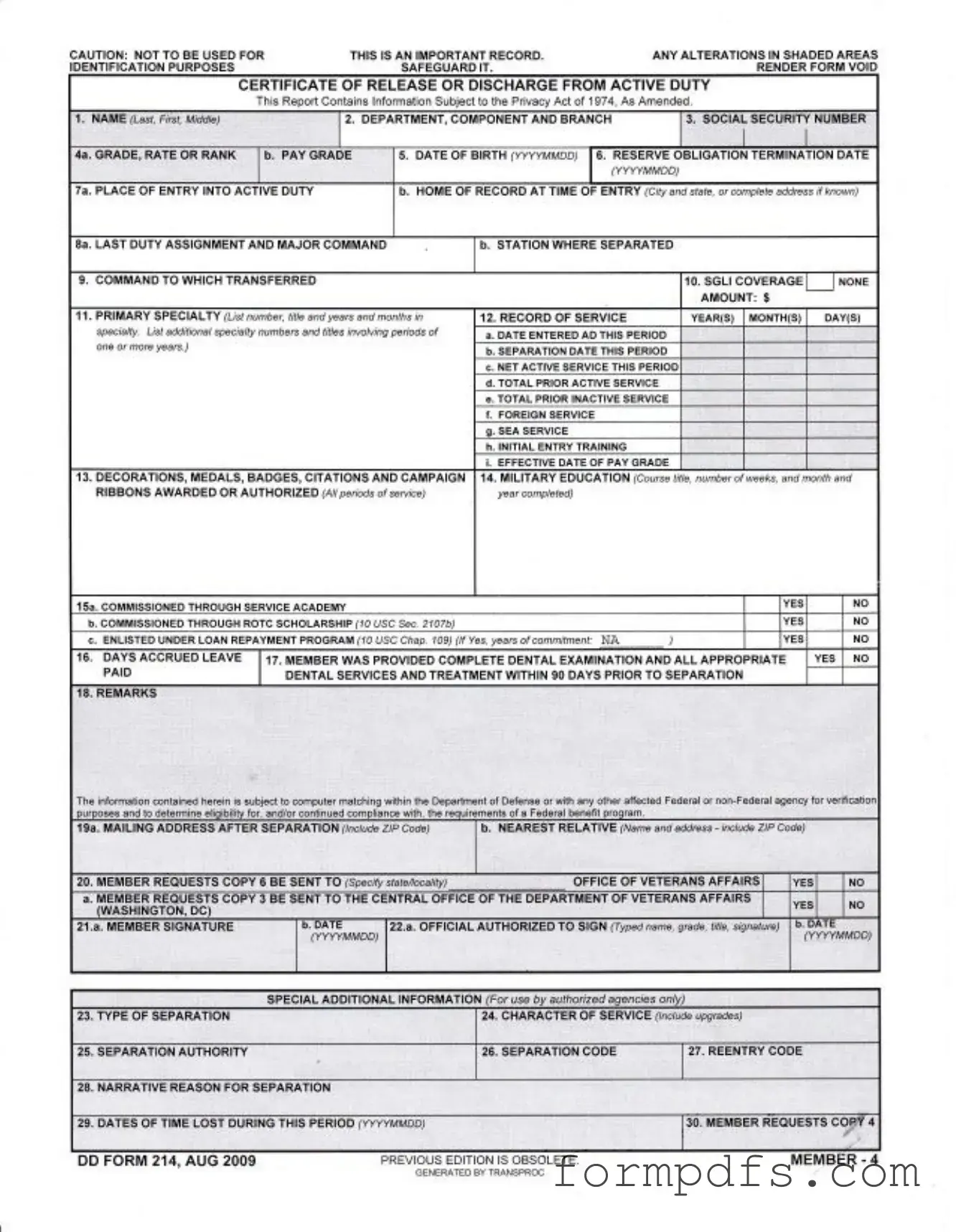The DD Form 214, officially known as the Certificate of Release or Discharge from Active Duty, is a crucial document issued to military personnel upon their separation from active duty. It provides a comprehensive summary of a service member's military service, including details such as the duration of service, awards, and the character of discharge. This form is essential for veterans seeking benefits and services from the Department of Veterans Affairs (VA) and other organizations.
The DD Form 214 serves multiple purposes. It acts as proof of military service, which is necessary for veterans to access various benefits, including healthcare, education, and housing assistance. Additionally, it is often required for employment opportunities within the civilian sector, as many employers value military experience. Safeguarding this document is vital, as it contains sensitive information and is not to be used for identification purposes.
What should I do if my DD Form 214 is lost or damaged?
If your DD Form 214 is lost or damaged, you can request a replacement through the National Archives. The process is similar to obtaining a new copy. Fill out the necessary form, provide the required information, and submit your request. It’s important to act quickly, especially if you need the document for benefits or employment opportunities.
What information is included on the DD Form 214?
The DD Form 214 includes various details about the service member, such as their name, Social Security number, date of birth, service dates, military education, decorations, and the character of service. This comprehensive overview helps to validate a veteran’s military experience and qualifications.
Can I make changes to my DD Form 214?
Altering the DD Form 214 is not permitted, as any changes can render the document void. If there are errors on the form, such as incorrect dates or names, veterans should seek a correction through the appropriate military branch or the Board for Correction of Military Records. This process ensures that the official record accurately reflects the service member’s history.
What is the difference between the types of separation listed on the DD Form 214?
The DD Form 214 outlines various types of separation, including honorable, general, other than honorable, bad conduct, and dishonorable discharges. Each type reflects the nature of the service member's conduct during their time in service. An honorable discharge is typically required for most benefits, while other types may limit access to certain services.
How does the DD Form 214 affect my eligibility for veterans' benefits?
The information contained in the DD Form 214 directly impacts a veteran's eligibility for benefits. An honorable discharge generally qualifies veterans for a wider range of benefits, including healthcare, education, and home loans. In contrast, those with less favorable discharges may face restrictions. It’s essential to understand how your discharge type may influence your access to these resources.
What should I do with my DD Form 214 once I receive it?
Once you receive your DD Form 214, it’s important to keep it in a safe place. Consider making multiple copies and storing them securely, as you may need to present this document for various applications or benefits throughout your life. Additionally, you might want to share a copy with trusted family members or advisors who can assist you with navigating your veteran benefits.
